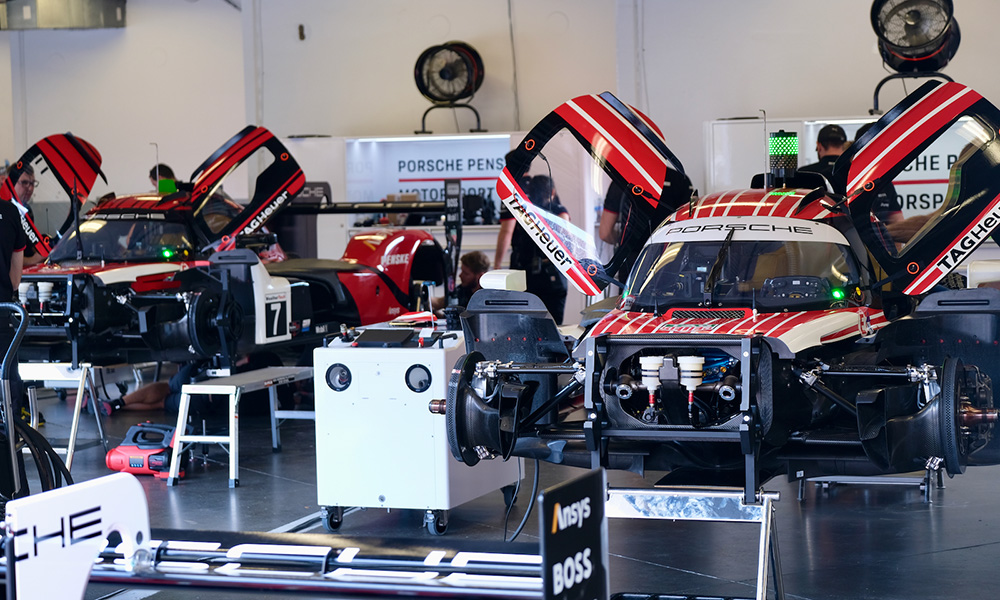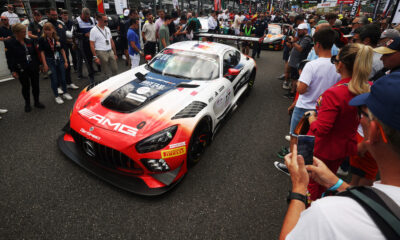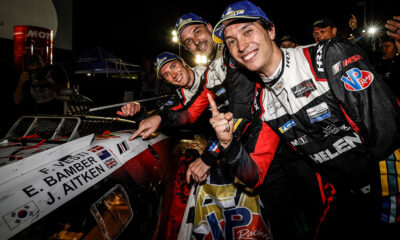
Photo: John Dagys
Porsche Penske Motorsport’s ramp up into a two-car testing program has been “very important” to the German manufacturer’s development process according to Porsche LMDh factory director Urs Kuratle.
The factory LMDh squad is running a pair of Porsche 963s in the IMSA-sanctioned test at Daytona International Speedway in only the second outing on U.S. soil with two cars following an outing at Homestead-Miami Speedway last weekend.
With BMW Team RLL and Chip Ganassi Racing having delayed starts to its two-car programs, with both of its second cars still being built-up in the paddock, Porsche Penske has become the first multi-car IMSA WeatherTech SportsCar Championship GTP class team to have both cars on track.
Having made two previous visits to Daytona, Kuratle said their objectives for this week’s two-day test are straightforward.
“Our main goal is IMSA’s goal because that’s why we’re here,” he told Sportscar365.
“Obviously we learn something as well with the whole thing but mainly it’s to make sure IMSA is happy with us; the WEC/FIA people are here as well.
“We did the pre-scrutineering [on Monday] and that was so far OK for us and that’s the main goal.
“It’s a sanctioned test. It’s also good to have all of the competition on track and to drive against them, to have everybody on the track.
“Of course we have some test program but it’s not so big. We don’t have many test points here because we’re here for the sanctioned test and to make sure we fulfill all the needs or requirements from FIA, ACO and IMSA.”
Porsche Penske took the opportunity to roll out its first race chassis at Homestead, which is sporting the No. 963 numberplate at Daytona.
“There we really had some test points as well, which we went through the whole thing,” Kuratle said.
“We had the homologation a couple of weeks ago and still there are some updates to come and learnings we have from the previous tests with some new bits and pieces which are on the car.
“This was the main goal in Homestead, which was good. Then we came here and we do not have so many test points here because it’s a pre-test for the season.”
While both Porsche and Penske are used to running multi-car squads, Kuratle explained that it still comes as a significant change after months of operating as a single-car test team.
It doesn’t only impact the crew on-site but also the team’s remote support back in Germany.
“First of all you learn twice as much,” Kuratle said. “What’s very important and not so straightforward, if you operate two cars in parallel, the whole operation, the whole toolchain behind it is way different.
“For us it’s very important to learn these lessons as well, to not only have one car.
“Everybody back home in the ops rooms and in the facilities, people are not only concentrating on one car but there are two cars you have to run at the same time.
“You have to deal with priorities. Things like a network demand on an IT network is twice as big.
“It’s not new to us because we are basically used to it. But if you start testing with a new car and a new team and you do it with one car only, you get used to it.
“Everybody knows you ultimately have to do it with two cars. But we get used to it with one car and then if you suddenly switch to two cars, it’s more. It’s very, very important for us to test it with two cars.
“The main thing is we learn twice as much as the two cars are identical. If something fails in one car, it should in theory fail on the other one as well if the mileage is the same.
“If not you question yourself and if it fails on the second car, you’re in [trouble] as well because then you have to react and you need twice as much spares.
“All in all, it’s an important lesson to learn that everybody has to go through.”





















